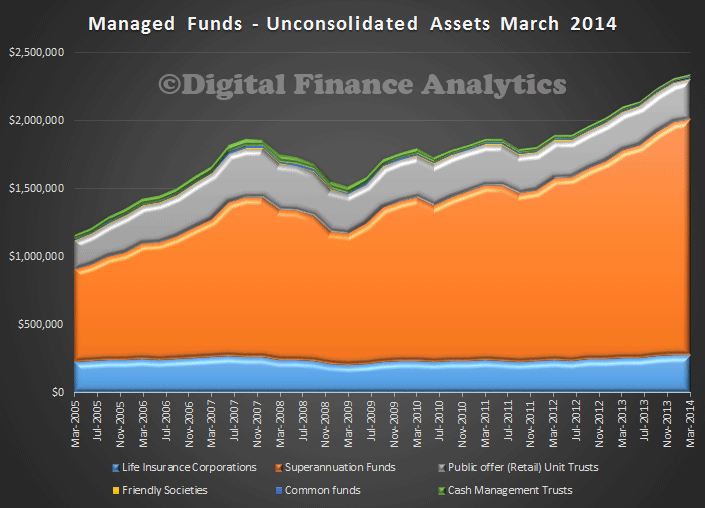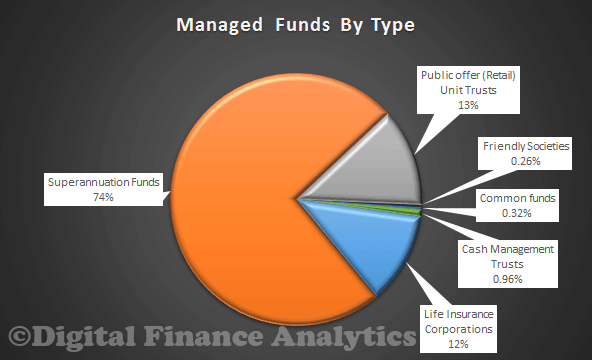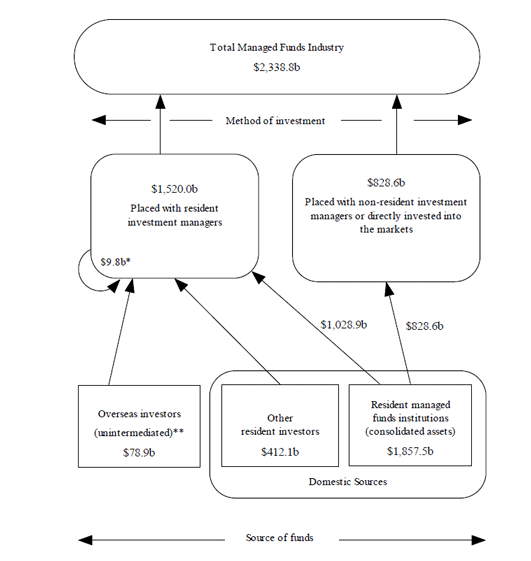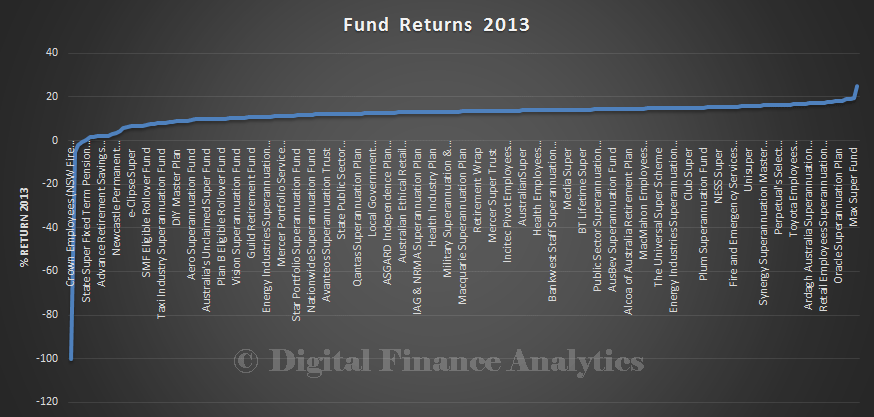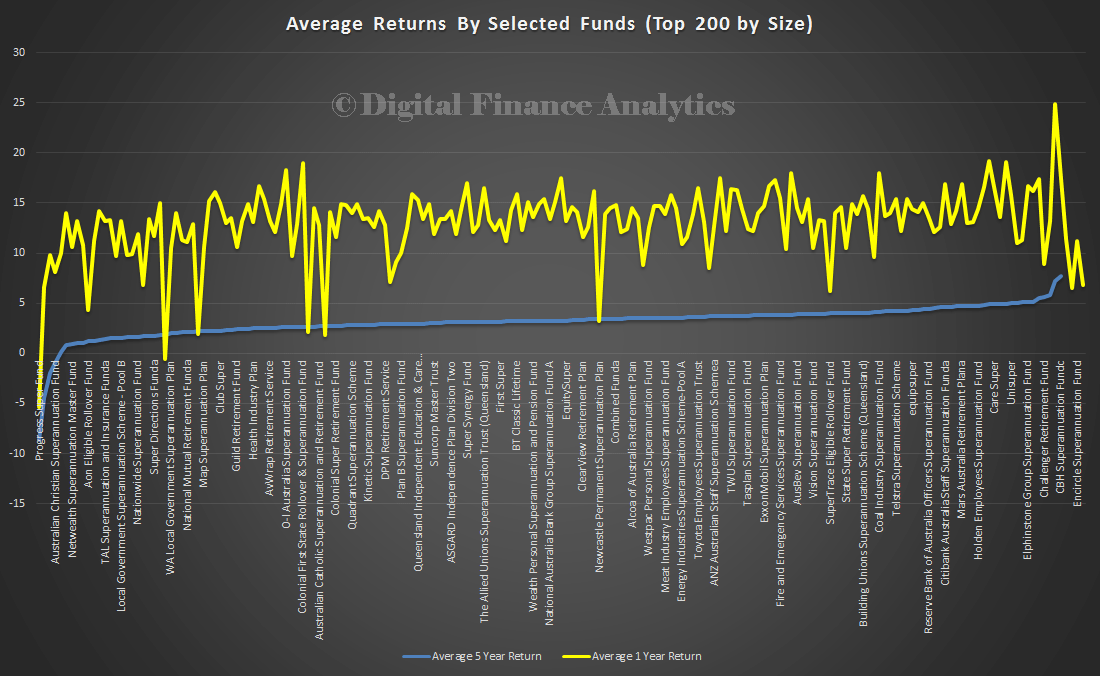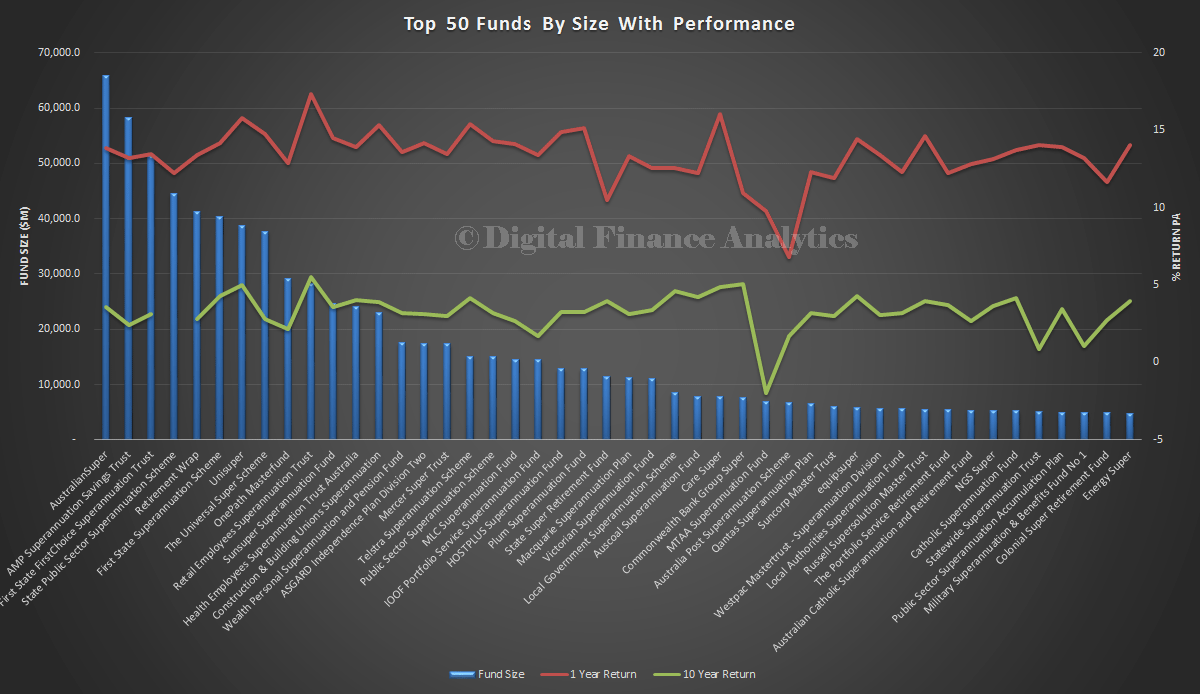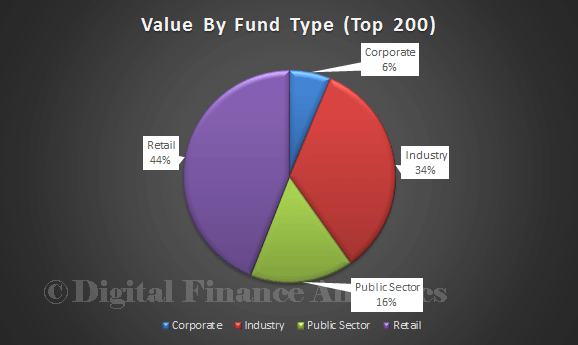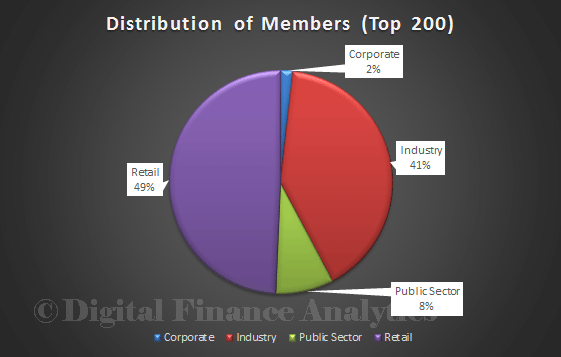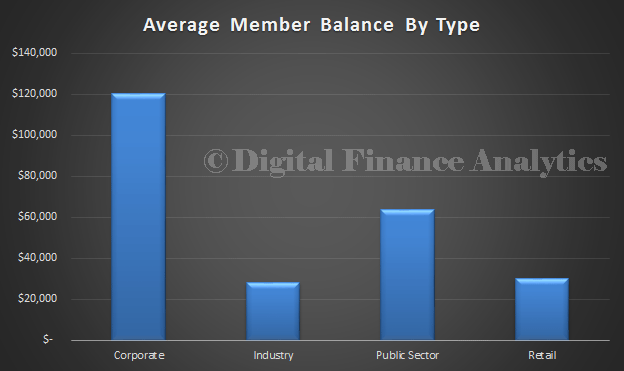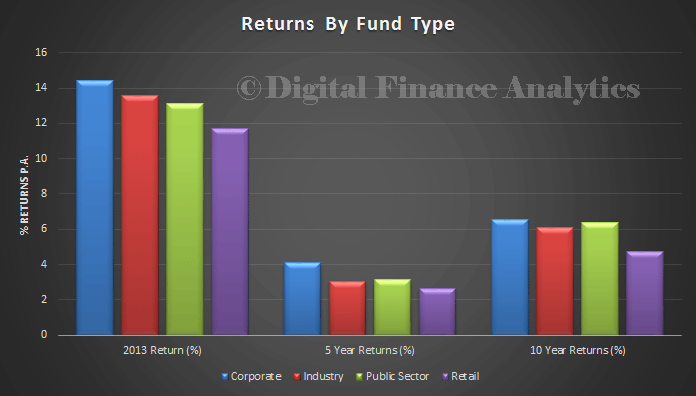ASIC today released a report into fee disclosure practices for super and managed investments. The intention of the fee and cost disclosure requirements is to promote comparability of products. However, ASIC’s review of industry practices indicates that there is significant variation in the disclosure of fees and costs. A key driver of this variation is the frequent complexity of the operational and investment structures of funds. In addition, data quality and differences in the interpretation of the fee and cost disclosure requirements can also lead to variations in disclosed fees. As a result, DFA’s take on the report is that investors need to be very careful when comparing products. ASIC makes a number of significant observations. Remember this is a $2,338.8bn industry, and fees have a profound impact on the overall returns from an investment.
- The reporting of fees and costs in underlying investment vehicles has been an area of significant concern. The fees and costs that are generally disclosed in a fund-of-funds arrangement are the fees and costs of the fund-of-funds manager, and not the fees and costs associated with the underlying funds. As a result, fees and costs may be understated by as much as 0.20%–0.40% annually.
- The disclosure of indirect costs provides investors with a more accurate representation of the overall fee burden associated with each product and allows for increased comparability across funds.
- Whilst difficult, APRA expects trustees to make all reasonable efforts to obtain information about their investments beyond the first non-connected entity.
- The disclosure of management costs is an area of significant concern for ASIC. Anecdotally, it has been alleged that there are instances of costs being manipulated to present investors with a product that appears to be more financially attractive than it really is.
- These disclosure practices can be fundamentally misleading because they reduce the amount disclosed as management costs and do not accurately portray the cost of individual products. They also prevent investors from being able to accurately compare superannuation or managed investment products against each other.
- There is also a lack of clarity in the industry regarding how future performance fees should be determined and disclosed. Currently, a number of alternative methods are used to determine future performance fees, and this can result in significantly different projections across superannuation funds. One common practice is for superannuation funds to disclose the previous year’s performance fees as a reflection of what will occur in the current year. ASIC considers the adoption of this practice may lead to misleading results because it implies that past performance fees are indicative of future performance fees.
- Inconsistency in the disclosure of fees in relation to the treatment of tax undermines the purpose of the Stronger Super reforms because it prevents investors from accurately and confidently comparing fee structures between superannuation funds.
- The disclosure of fees net of income tax assumes that all investors receiving the PDS will be entitled to a share of the reduction in income tax resulting from the costs that the fees pay for. However, only investors who have received taxable income during the year into their superannuation account—such as positive investment returns or taxable contributions (e.g. employer contributions)—are entitled to a reduction in income tax. ASIC considers the disclosure of fees net of income tax to be misleading to investors who are not entitled to a reduction in income tax.
- ASIC encourages industry to develop industry standards for good practice in fee and cost disclosure for superannuation funds and managed investment products.
We discussed the questions of fees in the light of FOFA recently. The ASIC report provides further evidence that improvements need to be made.

